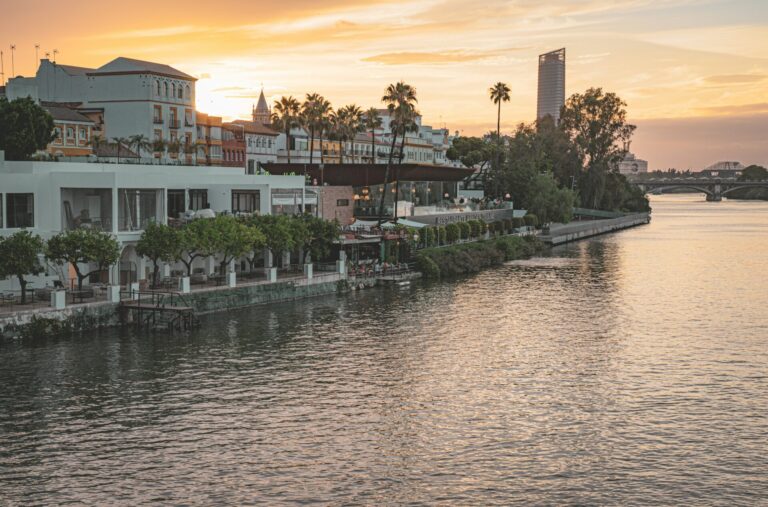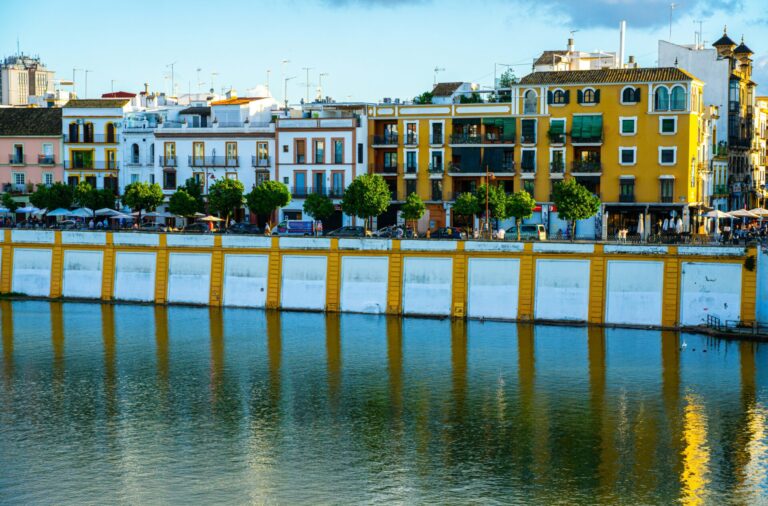Discover Triana in Seville
Discover Triana in Seville
Life in Triana
Triana, a vibrant neighborhood nestled on the west bank of the Guadalquivir River in Sevilla, Spain, is a place where history, culture, and community come together to create a unique and enchanting living experience. Known for its rich heritage, lively atmosphere, and strong sense of identity, Triana offers residents a taste of authentic Andalusian life. This blog post will explore what it’s like to live in Triana, from its historic roots to its modern-day charm.
History of Triana
Triana’s history dates back to Roman times when it was established as a Roman encampment. The neighborhood’s name is believed to be derived from the Roman Emperor Trajan. Over the centuries, Triana evolved under various rulers, including the Moors, who fortified it as a strategic stronghold. The neighborhood’s rich past is reflected in its architecture, traditions, and cultural landmarks.
The Spirit of Triana
Triana is often referred to as the “soul of Sevilla” due to its deep-rooted cultural traditions and strong community spirit. The neighborhood is famous for its flamenco heritage, with many of Spain’s most renowned flamenco artists hailing from Triana. The area is also known for its ceramics, with a history of pottery-making that dates back to Roman times. The colorful ceramic tiles, or “azulejos,” that adorn many of Triana’s buildings are a testament to this enduring craft.

Daily Life in Triana
Living in Triana means being part of a close-knit community where neighbors know each other and local traditions are cherished. The neighborhood’s narrow streets and charming plazas are filled with life, from bustling markets to lively tapas bars. Here are some aspects of daily life in Triana:
Markets and Shopping in Triana
The Mercado de Triana is a central hub for residents, offering a wide variety of fresh produce, meats, seafood, and local specialties. This bustling market is a great place to shop for groceries, sample traditional Andalusian dishes, and mingle with locals. In addition to the market, Triana has numerous small shops and boutiques where you can find everything from handmade ceramics to unique fashion items.
Tapas and Dining
Triana is renowned for its vibrant tapas scene, with countless bars and restaurants serving up delicious small plates. Popular spots like Bar Santa Ana, located near the Church of Santa Ana, offer a cozy atmosphere and a chance to enjoy traditional tapas while soaking in the neighborhood’s charm. For a more immersive experience, consider joining a tapas tour to discover the best local eateries and meet the families who have been running these establishments for generations.

Flamenco and Nightlife in Triana
As the birthplace of flamenco, Triana offers numerous opportunities to experience this passionate art form. From intimate flamenco bars like El Rejoneo and Lo Nuestro to larger venues like Teatro Flamenco Triana, there are plenty of places to enjoy live performances. The neighborhood’s nightlife is also vibrant, with Calle Betis being a popular spot for bars and clubs that offer stunning views of the river and the city beyond.
Cultural Landmarks
Triana is home to several historic and cultural landmarks that add to its unique character. Some of the must-visit sites include:
Church of Santa Ana
Built in the 13th century by King Alfonso X, the Church of Santa Ana is the oldest church in Sevilla. This Gothic-Mudéjar style church is not only a place of worship but also a cultural icon. According to local legend, children baptized here are blessed with a talent for flamenco. The church’s beautiful architecture and rich history make it a significant landmark in Triana.
Centro Cerámica de Triana
Housed in a former ceramic factory, the Centro Cerámica de Triana is a museum dedicated to the neighborhood’s pottery-making heritage. Visitors can learn about the history of ceramics in Triana, see traditional pottery techniques in action, and admire the beautiful azulejos that decorate the museum. This center is a testament to Triana’s enduring connection to the art of ceramics.
Castillo de San Jorge
Located near the Triana Market, the Castillo de San Jorge was once the headquarters of the Spanish Inquisition. Today, it serves as a museum where visitors can learn about this dark chapter in Sevilla’s history. The site offers a fascinating glimpse into the past and is a reminder of the neighborhood’s complex and multifaceted heritage.
Community and Festivals
Triana’s strong sense of community is evident in its local festivals and events. One of the most important celebrations is the annual Santa Ana Festival in July, which honors the neighborhood’s patron saint. The festival features processions, music, dancing, and plenty of food, bringing residents together in a joyful celebration of their shared heritage. Another significant event is the Semana Santa (Holy Week) processions, where the statue of the Virgin Esperanza de Triana is carried through the streets, showcasing the neighborhood’s deep religious traditions.
Living in Triana: Practical Tips
For those considering making Triana their home, there are several practical aspects to keep in mind:
Housing
Triana offers a range of housing options, from traditional Andalusian houses with charming courtyards to modern apartments with contemporary amenities. The neighborhood’s real estate market is diverse, catering to different tastes and budgets. Whether you’re looking for a cozy apartment or a spacious family home, Triana has something to offer.
Education
Triana is well-served by a variety of educational institutions, including public and private schools. The neighborhood’s family-friendly atmosphere makes it an ideal place for raising children, with plenty of parks and recreational facilities available. Additionally, Triana’s central location provides easy access to Sevilla’s universities and higher education institutions.
Transportation
Triana is conveniently located just across the river from Sevilla’s city center, making it easy to access the city’s main attractions and amenities. The neighborhood is well-connected by public transportation, with several bus routes and the nearby Plaza de Cuba metro station. For those who prefer to walk or cycle, Triana’s compact size and pedestrian-friendly streets make it easy to get around on foot or by bike.
Conclusion
Living in Triana means embracing the heart and soul of Sevilla. This vibrant neighborhood offers a unique blend of history, culture, and community, making it a truly special place to call home. From its rich flamenco heritage and bustling markets to its charming streets and welcoming atmosphere, Triana invites residents to experience the best of Andalusian life. Whether you’re drawn to its artistic traditions, lively nightlife, or a strong sense of community, Triana is a neighborhood that captures the essence of Sevilla and offers a warm and inviting place to live.
